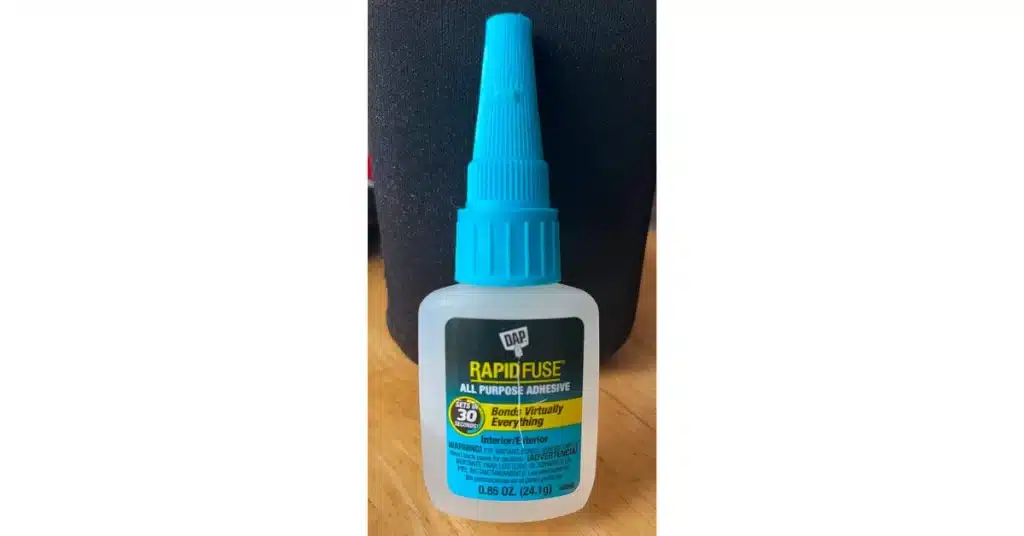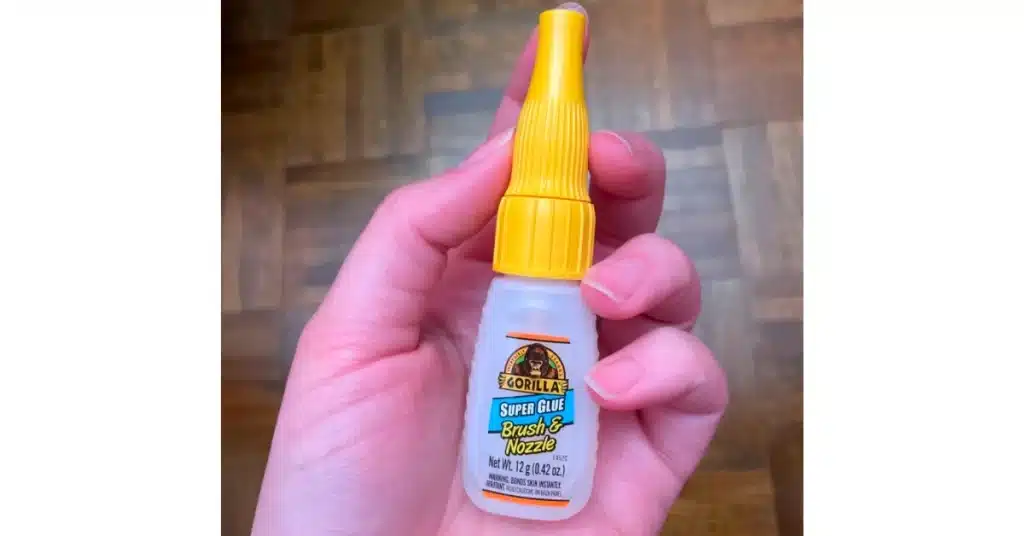Instant adhesives are an excellent pick for household repairs and, at certain times, outdoor repairs. Rapid Fuse is one of the most well-reviewed instant adhesives in the market and is recommended by many users. On the other hand, Super Glue has been around for a long time, and you can use it for repairing many materials.
So, in the battle between Rapid Fuse vs. Super Glue, which one should you side with and why? I’ll review the features and specifications of these glues and how they differ from each other in this article.
Read More: DAP Rapid Fuse vs. Gorilla Glue

Overview of Rapid Fuse
Rapid Fuse is an all-purpose, instant-setting adhesive manufactured by DAP with a speedy set time and cure time. Furthermore, Rapid Fuse also bonds well with various materials and works with materials you use both outdoors and indoors.
DAP Rapid Fuse bonds well with most common materials like – Wood, Rubber, Plastic, Metal, and more. Rapid Fuse comes with a precision tip, and applying the glue is easy for beginners or people without experience. Once you use Rapid Fuse, it starts to set within 30 seconds. After it starts to set, a complete cure takes roughly 30 minutes, depending on the materials and the glue you use.
One of the advantages of Rapid Fuse, as opposed to other glues, is that you don’t need to clamp your materials together to start bonding. Rapid Fuse also dries clear, and you can use it with materials with various finishes and colors without the risk of the glue looking odd.
Rapid Fuse doesn’t produce any foam or drips, and you can safely work with it without the risk of making a mess.
Rapid Fuse comes in tubes weighing 0.2 oz, 0.85 oz, and 16 grams.
Overview of Super Glue
Super Glues are typically composed of Cyanoacrylate and form a strong, long-lasting bond that happens in seconds. Super Glue is instant-setting Glue and is an excellent pick if you’re looking for a quick fix around the house.
In the market, you’ll find Super Glue made by various brands, and some notable ones are manufactured by Loctite, Gorilla, and Scotch. Depending on which brand of Super Glue you get, the adhesive can be moisture, heat, and weather resistant, making it viable for indoor and outdoor use.
Furthermore, Super Glue is versatile and will work with various materials, like – Plastic, Wood, Rubber, Ceramic, and more. Super Glue is available in both gel and liquid forms. Usually, it comes with an applicator made of a nozzle or brush applicator (for liquid forms) to make using them straightforward for you.
Super Glue is typically composed of Cyanoacrylate, forming a bond when it comes in contact with moisture. However, you don’t need to spray or apply extra water, since the water molecules present in air is enough.

Read More: Model Glue Vs. Super Glue
Differences Between Rapid Fuse And Super Glue
Now that I’ve reviewed what Rapid Fuse and Super Glue offer, let’s look at how they differ.
Best Materials to Use On
DAP Rapid Fuse is marketed as an all-purpose glue that works well with most common household and outdoor materials. You can use it for Plastic, Metal, Wood, Rubber, and more.
Depending on which specific Super Glue you get, it also works well with various materials. Super Glue works well with – Plastic, Metal, Rubber, Wood, Ceramic, Paper, etc.
Set and Cure Time
DAP Rapid Fuse sets and cures significantly faster compared to other glues. Rapid Fuse will start to set within 30 seconds after applying it; a complete cure takes around 30 minutes.
On the other hand, depending on the variant of your Super Glue, it sets between 5 to 90 seconds. Once correctly set, a complete cure will take an average of 8 to 24 hours.
Read More: Zap a Gap vs. Super Glue
Last Opinion
DAP Rapid Fuse and Super Glue perform similarly and work faster than many other alternatives. So in the battle between Rapid Fuse vs. Super Glue, which one should you side with? Rapid Fuse bonds and cures more quickly than many super types of glue, so if you need a quick repair, go with Rapid Fuse.

